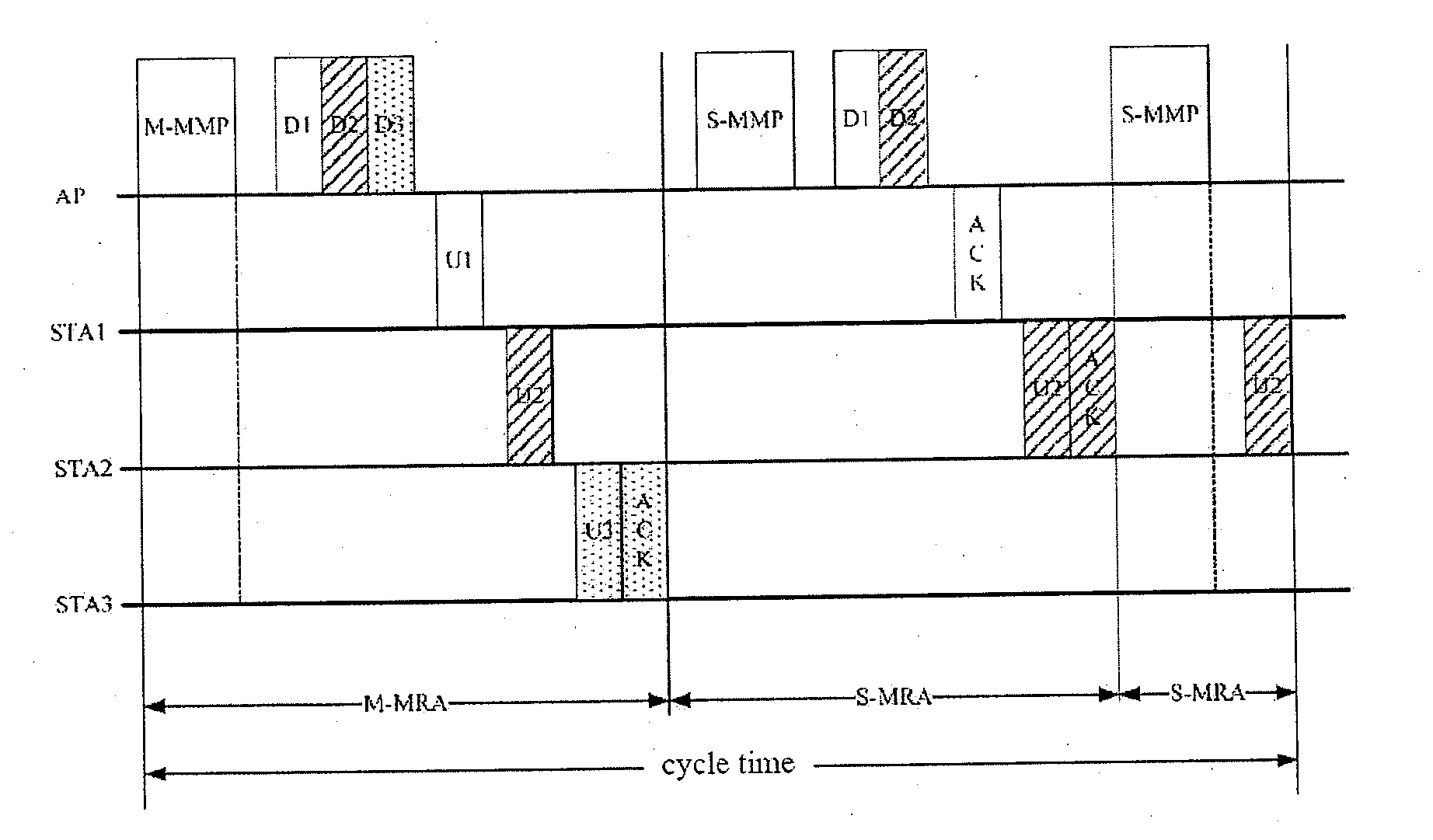Communication Method In An Automatic System
- Summary
- Abstract
- Description
- Claims
- Application Information
AI Technical Summary
Benefits of technology
Problems solved by technology
Method used
Image
Examples
Embodiment Construction
[0033]FIG. 5 is a schematic diagram of a sequence that uses the master-slave MRA method of the present invention to perform data exchange. The automation communication system in FIG. 5 comprises an access point AP and three client terminals STA1, STA2, and STA3. The access point AP sends downlink data to the client terminals STA1, STA2, and STA3, and the client terminals STA1, STA2, and STA3 respectively send uplink data to the access point AP.
[0034]In accordance with the method of the present invention, the data exchange process between the access point AP and three client terminals STA1, STA2, and STA3 is divided into two phases, which respectively are a master multiple receiver aggregation phase (Master-MRA) and two slave multiple receiver aggregation phases (Slave-MRAs).
[0035]During the master multiple receiver aggregation phase (Master-MRA), the access point AP aggregates the data to be sent to client terminals STA1, STA2, and STA3 into one packet, which packet includes a maste...
PUM
 Login to View More
Login to View More Abstract
Description
Claims
Application Information
 Login to View More
Login to View More - R&D
- Intellectual Property
- Life Sciences
- Materials
- Tech Scout
- Unparalleled Data Quality
- Higher Quality Content
- 60% Fewer Hallucinations
Browse by: Latest US Patents, China's latest patents, Technical Efficacy Thesaurus, Application Domain, Technology Topic, Popular Technical Reports.
© 2025 PatSnap. All rights reserved.Legal|Privacy policy|Modern Slavery Act Transparency Statement|Sitemap|About US| Contact US: help@patsnap.com



